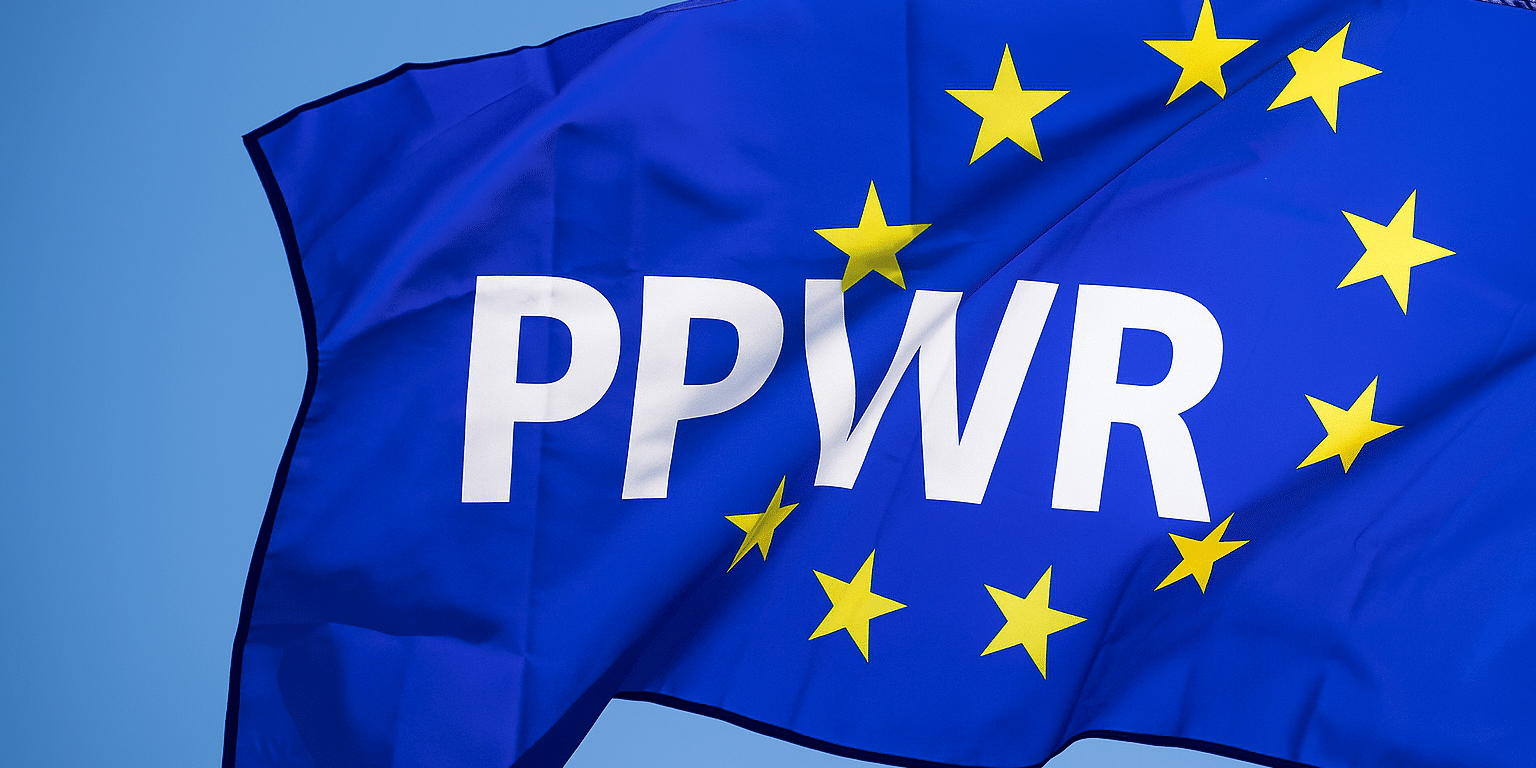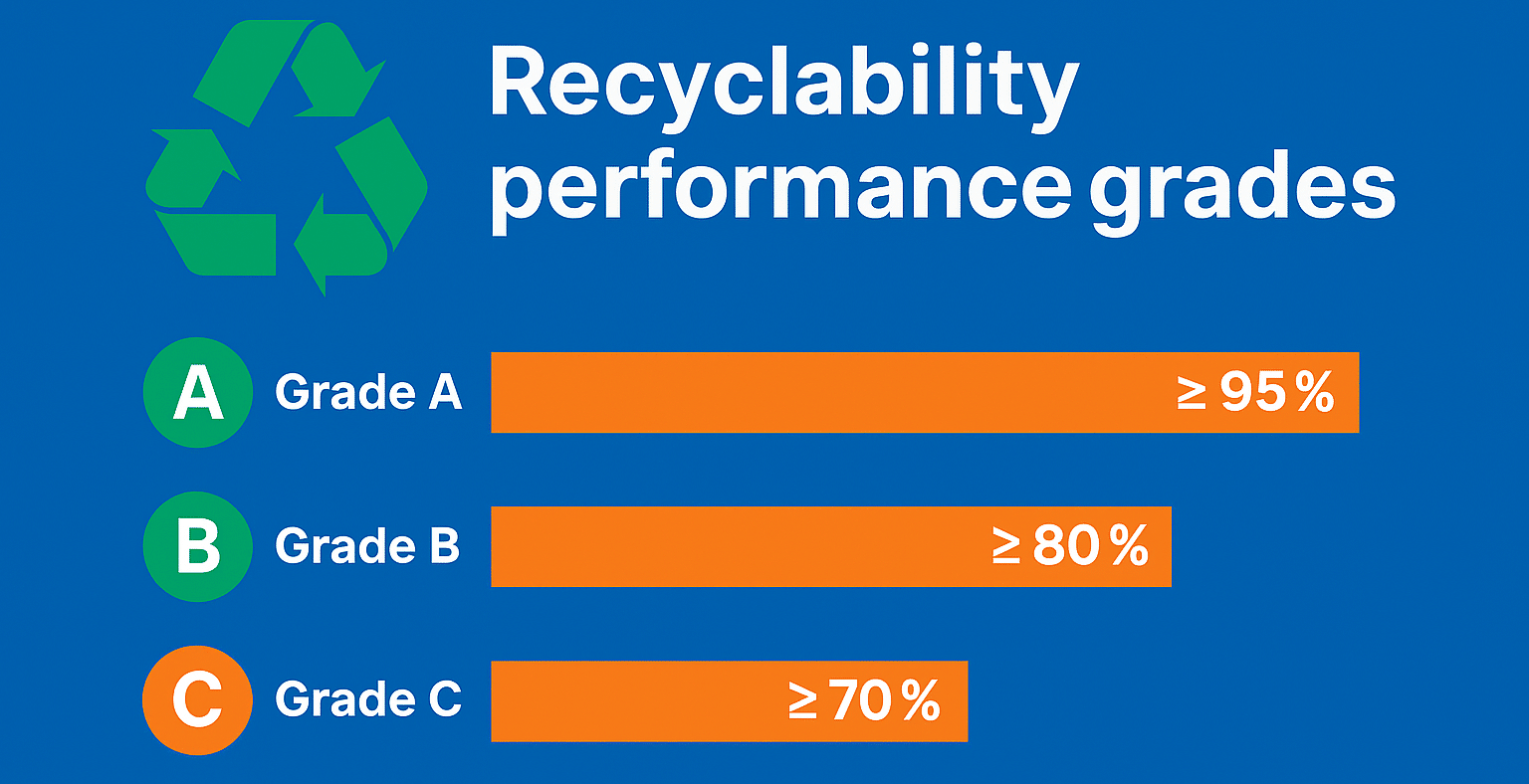Major goals of the PPWR
- Waste Prevention: By 2040, the amount of packaging waste per capita must be reduced by 15% compared to 2018. This is subject to binding reduction targets for each member state.
- Reuse and refill: Concrete percentages are imposed for reusable and refillable packaging for various sectors (including hospitality, retail, e-commerce), increasing incrementally between 2030 and 2040.
- Recyclability: As of 2030, all packaging must be technically recyclable, according to the criteria in Annex II of the PPWR. From 2035, in addition, packaging must be demonstrably effectively recycled on a large scale.
- Recycled material: Plastics are subject to mandatory minimum percentages of recycled content, depending on the type of packaging (e.g., bottles, contact-sensitive plastics, non-food packaging).
- Internal Market Harmonization: The PPWR provides uniform rules for design, labeling and reporting in all EU member states, eliminating differences in national legislation and creating a level playing field.

Requirements and measures
Recycling
- All packaging on the European market must be technically recyclable from Jan. 1, 2030.
- Packaging can be collected separately in an effective and efficient manner.
- Packaging must be capable of being directed to a defined waste stream without compromising the recyclability of other waste streams.
- Packaging must be recyclable to the extent that the resulting secondary raw materials are of sufficiently high quality to replace the primary raw material.
- Possibility of Large Scale Recycling (from January 1, 2035). Packaging must not only be technically recyclable, but also effectively recycled on a large scale. This means that infrastructure and capacity must also be in place in practice to recycle packaging.
Starting in 2030 , recycled content will go up incrementally. By
- Grade A → at least 95% recyclable
- Grade B → at least 80% recyclable
- Grade C → at least 70% recyclable
RPGs are becoming an important tool to assess the technical and practical recyclability of packaging and to encourage producers to take their packaging to the next level.
Packaging must not contain more than 50% space or air(this includes paper shreds, air cushions, bubble wrap and other padding materials).

Labeling
The PPWR requires harmonized labeling across Europe in the future. This obligation is expected from August 2028.
- Uniform pictograms: There will be a harmonized label adopted by the EU (expected to be ready in 2026). This label will show the material composition of the packaging using simple, unambiguous pictograms. This is the core of the new labeling.
- Information on sorting: Labels should also provide information on how consumers should properly dispose of and sort the packaging.
- QR code: Reusable packaging must be marked with a QR code or other standardized, open and digital data carrier. This digital medium contains information on reusability, available reuse systems and collection channels. Market participants are free to supplement this digital data carrier with additional information on the packaging or at the point of sale (for example, in text or pictograms), but the presence of the QR code or equivalent digital carrier will become mandatory in 2030.
- Labels for reuse: Reusable packaging will have a separate, standardized label informing consumers that the packaging is intended for reuse. According to the current PPWR schedule, this is expected to become mandatory from February 2029. This applies, for example, to our reusable shoppers.”
In practice
The PPWR is a complex but inevitable transition to a more sustainable economy. The goals are ambitious and not all criteria and definitions have yet been fully developed. In addition, the PPWR is not a static document, but a framework that will be further fleshed out and adjusted in the coming years. For companies, this means that it is important to follow developments closely and respond to new obligations in a timely manner. One way of doing this is by mapping out the current packaging portfolio and testing it against the upcoming requirements, and adapting packaging and processes where necessary.
Packit follows developments closely. We try to keep the information on this page as current as possible.
Disclaimer version 1_October 2025
The information above is for general information purposes only and is not binding. Although the content has been compiled with the utmost care, we do not guarantee that the information is complete, accurate or up-to-date. No rights can be derived from the content of this information.
